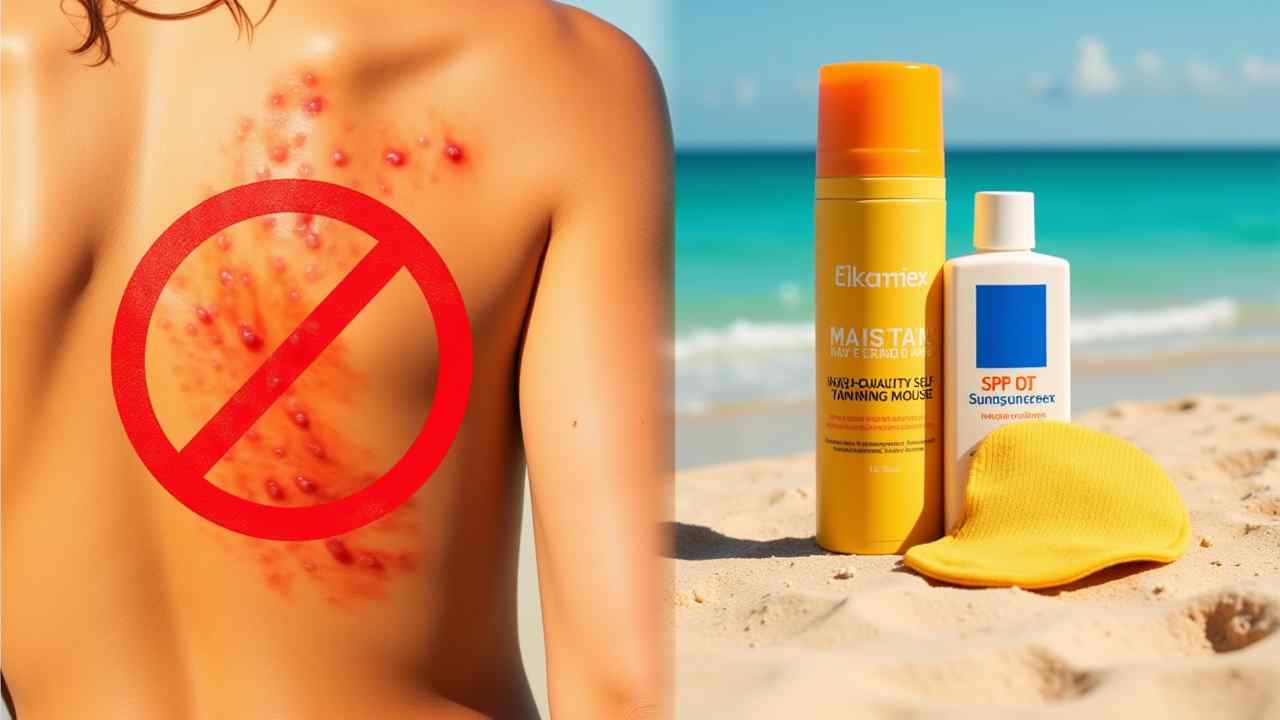
☀️ How to Tan Safely Without Burning: A Dermatologist's Guide
☀️ How to Tan Safely Without Burning: A Dermatologist's Guide to Sun Safety ☀️
❗ CRITICAL HEALTH INFORMATION: According to dermatologists and major health organizations, there is no such thing as a safe or healthy tan from UV radiation. A tan is your skin's response to DNA damage from the sun or a tanning bed. This guide focuses on the only safe way to achieve a tanned appearance.
Many people love the look of tanned skin. They want to know how to tan safely without burning. It is a very common goal. However, it is based on a dangerous misunderstanding of how the sun affects our skin.
This guide will explain the science behind a tan. We will discuss the serious risks of UV exposure. Most importantly, we will show you the only truly safe way to get that golden glow you desire. Let's protect your skin's health. ✅
🤔 What is a Tan, Really?
A tan is often seen as a sign of health. In reality, it is a sign of injury. When your skin is exposed to ultraviolet (UV) rays, the radiation damages the DNA in your skin cells. This is a serious form of cellular damage.
In response to this injury, your skin tries to protect itself. It produces more melanin, which is the pigment that gives your skin its color. This increase in melanin is what we see as a tan. A tan is your body's panicked response to an attack.
A sunburn is just a more severe and obvious form of this damage. But even a tan without a burn is a clear sign that your skin's DNA has been harmed. This damage is cumulative and irreversible.
🧴 What is the Only Truly Safe Way to Get a Tan?
The only safe way to get a tan is to fake it. Sunless tanning is the only method recommended by dermatologists. These products create a tan-like color on the skin's surface. They do so without any harmful UV radiation.
How do self-tanners and spray tans work?
Sunless tanners use an ingredient called DHA. This is a color additive that reacts with the dead cells on the top layer of your skin. It temporarily darkens these cells. This creates a beautiful, bronze color that looks like a real tan.
This process is purely cosmetic. It does not involve any DNA damage. The color fades naturally over about a week as your skin exfoliates. This is the true answer to how to tan safely.
🚫 What Are the Long-Term Risks of a "Tan Without a Burn"?
Every time you get a tan from the sun or a tanning bed, you increase your risk of serious health problems. It is crucial to understand these long-term consequences. This is why avoiding a UV tan is so important.
Skin Cancer: UV radiation is a proven carcinogen. It is the number one cause of skin cancer, including the most deadly form, melanoma. Each tan you get adds to your lifetime risk.
Premature Aging: UV exposure is the primary cause of visible aging. It destroys the collagen and elastin that keep your skin firm and plump. This leads to wrinkles, fine lines, dark spots, and leathery skin texture.
🛡️ How Can You Minimize Damage if You Are in the Sun?
Sometimes, sun exposure is unavoidable. In these cases, your goal should be protection, not tanning. When you ask how to tan safely without burning, the real answer is to prevent both. Here are the keys to sun safety.
- Use Sunscreen Generously: Wear a broad-spectrum sunscreen with an SPF of 30 or higher. Reapply it at least every two hours.
- Seek Shade: Avoid direct sun during the peak hours of 10 a.m. to 4 p.m.
- Wear Protective Clothing: A wide-brimmed hat, sunglasses, and sun-protective clothing are your best defense.
- Never Use Tanning Oils: Tanning oils with little to no SPF are incredibly dangerous. They concentrate UV rays and accelerate skin damage.
Protecting your skin is the best thing you can do for your health. Embrace your natural skin tone. Or, get a beautiful, risk-free glow from a bottle. ✨